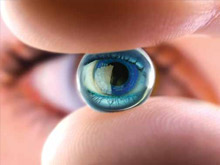Health Topics
-
Healthy Living
-
|
|
March 2012
|
| Glaucoma A different eye in us? |
| Dr Binita Thakore |
| |
 |
Ongoing clinical research on Glaucoma has the doctors thinking that Indians have a case of their own in how Glaucoma manifests itself. |
What is Glaucoma?
Glaucoma is a group of eye diseases, which cause progressive and irreversible damage to the nerve behind the eye (optic nerve). This occurs due to accumulation of a fluid in the eye causing high eye pressure and can ultimately lead to blindness.
There are different kinds of glaucoma. Some glaucomas occur because the Glauc A different eye in us? Dr Binita Thakore drainage channels of the eye do not function well (open-angle glaucoma) whereas some occur because the passage that leads to the drainage channels gets narrow (angle-closure glaucoma).
Angle-closure glaucoma is of two types: Acute and chronic.
Acute angle-closure glaucoma: The passage closes suddenly, causing sudden rise in the eye pressure and symptoms like severe pain in the eye associated with nausea, headache, blurring of vision and of seeing coloured halos like rainbows around lights.
Chronic angle-closure glaucoma: The passage closes very slowly over months or years causing no symptoms. One may not notice vision changes till about 50 per cent vision loss occurs. Some may have occasional blurring of vision and may see rainbows around lights. Asians or people who are farsighted and have smaller eyes and narrow passages are at a greater risk of developing angle-closure glaucoma.
Treatment
Angle-closure glaucoma is treated differently from open-angle glaucoma. The main aim of treatment would be to prevent further narrowing of the passages. Laser iridotomy is done
to treat the narrow passages. It is especially important to undergo a laser in the other eye to prevent narrowing. Eye drops can be used following lasers to control the eye pressure. Surgery can be performed in eyes where the passages are completely closed.
ALERT!
Angle-closure glaucoma is commonly seen in Indians unlike open angle glaucoma that is seen in the rest of the world. Again, the angle closure in Indians differs from the angle closure in other populations, as it not symptomatic. This glaucoma mimics open-angle glaucoma. Therefore it is important that an accurate diagnosis be made. In order to make an accurate diagnosis, gonioscopy - the technique to check the passages is necessary.
|
FACTS
Glaucoma runs in families so people with a family history of this disease should get
their eyes examined at regular intervals
- Angle-closure glaucoma is more common above the age of 35 years.
- It is a lifelong disease and can lead to blindness, if left untreated.
- There are several investigations that aid in early diagnoses of glaucoma.
- This disease cannot be cured but can be controlled.
|
|
Dr Binita Thakore is Sr consultant and Glaucoma Specialist Dept of Ophthalmology
Apollo Hospitals, Ahmedabad |
|
|